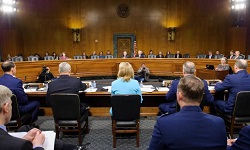| June 25, 2015 | |||||
 |
 |
 |
 | |||||||||||||
|
Worm Week!
In honor of the 20th International C. elegans Meeting convening in UCLA this week, we present a special section of the e-News highlighting All Things Worm! More than 1,700 scientists are expected to attend the meeting from June 24–28, 2015, in Los Angeles, California. The meeting features 200 talks and more than 1,000 poster presentations on a diverse range of cutting-edge research topics including physiology, neurobiology, development, evolution, behavior, aging, ecology, gene regulation and genomics. For more meeting highlights, click here, and follow #WORM15 on Twitter for live meeting updates!
“How to Get Published” workshop at the Worm Meeting! Join editors from GENETICS, G3: Genes|Genomes|Genetics, and more for a brief breakfast presentation and discussion on Friday, June 26. This is an excellent opportunity for graduate students, postdoctoral scholars, and undergraduate students to have informal conversations with editors about the peer-review and scientific publishing. Also stop by Pauley Pavilion and visit GENETICS and G3 editors and staff at the GSA booth, or email tracey.depellegrin@thegsajournals.org or ruth.isaacson@thegsajournals.org to set up a time to talk publishing. GSA Executive Director Adam Fagen will be at the meeting and available to discuss anything related to the Society, including the 2016 meeting, outreach, and policy. Beth Ruedi, GSA’s director of education, will also be on hand and happy to discuss genetics careers, finding postdoc, Vision & Change, or anything you’d like to chat about! Society News Don’t forget: student and postdoc members can now submit applications for GSA Trainee-Organized Symposia. This new member benefit provides up to $2,000 in funding for local and regional symposia organized by GSA trainee members in subject areas relevant to the GSA mission. Applications must be received by July 10, 2015. See the GSA website for details. Nominations are now being accepted for GSA’s five prestigious annual awards:
We need your help! Phylo: The Trading Card Game has released a beta version of a GSA Model Organisms Deck. This deck was created in an attempt to raise awareness about the diverse nature of experimental questions, techniques, and model organisms in our field. We are looking for beta-testers to provide feedback not only on the game, but on the specific cards themselves, by July 1, 2015. If you are interested, and we hope you are, here's what you need to do: PLAY! And then let us know how we can make it better. [more…] The GSA Journals The power of 100,000: More than 100,000 people make up the Genetic Epidemiology Research on Adult Health and Aging (GERA) cohort, an ongoing genomics study of members of the Kaiser Permanente Medical Care Plan. Three core papers describing the study are now published Early Online in GENETICS. The papers describe the genetic ancestry and telomere lengths of the participants, and the genotyping methods developed for the project. Read an interview with co-PI Neil Risch in the Genes to Genomes blog and see coverage of the papers at GenomeWeb.
Repeat assembly: In 2010 Krsticevic et al. found 18 copies of the D. melanogaster Y chromosome gene Mst77F. Their repetitive structure caused assembly problems, and hence their genomic organization and total copy number remained unknown. In the latest issue of G3, the authorsreinvestigated the Mst77F region and found that the PacBio, but not the Illumina D. melanogaster genome assembly, could be used to accurately reconstruct it. These results highlight the utility of PacBio sequencing in assembling difficult genomic regions.
|
Included in this Issue:
| ||||||||||||
The molecules behind mimicry: The vibrant passion-vine butterfly species Heliconius erato doesn’t taste as good as it looks. The flesh of this South and Central American species accumulates toxic compounds to discourage would-be predators, who quickly learn to associate the butterflies’ unpleasant taste with their bold red warning colors and patterns. But H. erato isn’t the only species that wears this particular danger sign. Read more about advances in genomic understanding of wing patterning and Müllerian mimicry in Heliconius.
The National Science Foundation has elected Amanda Hallberg Greenwell to head the agency’s Office of Legislative and Public Affairs (OLPA). OLPA communicates information about NSF’s activities, programs, research results and policies to a diverse range of audiences. The National Institutes of Health has appointed eight individuals to the NIH Council of Councils. The council was established to advise the NIH Director on policies and activities of the Division of Program Coordination, Planning, and Strategic Initiatives. This includes providing recommendations on research in important emerging scientific areas, rising public health challenges, or knowledge gaps that deserve special attention. Community Announcements
A new app called protocols.io from GSA member Lenny Teytelman hopes to remove barriers to scientists hoping to share their research with others. Forbes reports on this innovation, which aims to bring researchers together online via a platform where they can share experimental processes and protocols. GSA Board Trainee Representative Sonia Hall, one of the early adopters of this new open access repository of protocols and methods, is featured in the article.
|
|||||||||||||
| Do you have a brief announcement to submit to GSA
e-News? e-News items include news about GSA members – new positions, book publication, awards or grants received and obits; short policy items; brief research news items and grant programs; and, award nomination announcements. Deadline for next issue: July 3, 2015. Send items (and feedback) to Beth Ruedi, eruedi@genetics-gsa.org. | |||||||||||||






